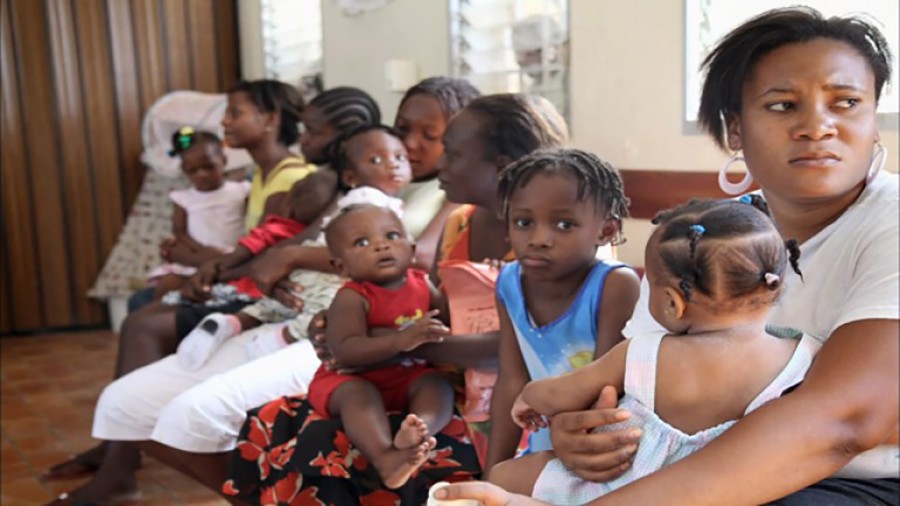
Transcript
A country left devastated. In the wake, destruction and despair.
More than a million are estimated to be homeless. Food and shelter is desperately needed. Living conditions are grim. Sanitation, a major challenge. Disease, a constant threat.
[SPEAKING FOREIGN LANGUAGE] Soon after the earthquake, members were organized to assist with finding food and water. At first, we slept outside without tents. Within hours of the quake, The Church of Jesus Christ of Latter-day Saints was sending humanitarian aid to victims. Thousands sought sanctuary on Church grounds, which had become havens of safety and calm. [SPEAKING FOREIGN LANGUAGE] I have been here for 23 days. My house was destroyed. I don't have anywhere else to go. Sixteen-year-old Cazy Lenlingy's mother injured her legs in the quake. The two are grateful now to stay at the [? Mar ?] [? de San ?] Church building with five other family members. [SPEAKING FOREIGN LANGUAGE] A neighbor told me about this place and invited me to come. I am very happy to be here. Everyone has been kind and has received me well, thanks to God. The Church is also providing displaced families with hundreds of these hurricane-resistant housing kits before the rainy season. This is the latest phase of the relief effort by the Church, which has already provided more than 2 million pounds of supplies, including food, clean water, and medicine, to the Haitian people. It's a mission to restore normalcy and hope. [SPEAKING FOREIGN LANGUAGE] We have hope, because we have support from many other people in other locations.
We believe in the words that have been told to us, and we will succeed. Are you thinking of putting tents here? Yes, we will put tents here. The goal is to help families become self-reliant. Local Church leaders are organizing service projects to clear away the rubble of crumbled homes. Once properties are cleared, tents or the temporary shelters can be set up.
The principle of welfare should take place. Like, help people to help themselves. Church-sponsored teams of doctors hold clinics at the nine meetinghouses around Port-au-Prince and work treating the sick and injured at one of the few hospitals still standing. But even in chaos, there often springs hope. The same day these doctors arrived in Haiti, they faced their first medical emergency. We knew this was a possibility. We didn't expect it the first day we arrived. Noisilia Saintdor was in advanced labor at the central ward building. The doctors had just enough time to place her on this ping pong table before delivering a tiny, but healthy baby boy. [SPEAKING FOREIGN LANGUAGE] I am grateful for the people that have received us here, and for everyone who is doing this great work. I was coming, mostly anticipating sadness. And to see this bright ray of hope in the midst of all this was beautiful. Congratulations. That hope is now in the future. The Church is looking at several long-term projects, including employment issues and major reconstruction of medical facilities and schools that will help Haiti in the years to come. You know, there is hope for Haiti. And this may be a great chance for Haiti to rebuild in a way that it has not had the opportunity to do before.